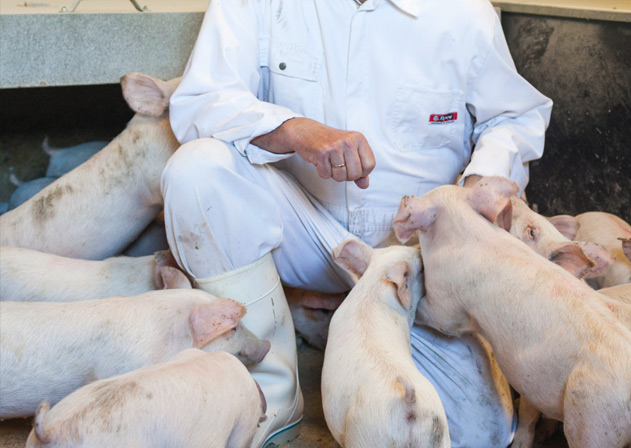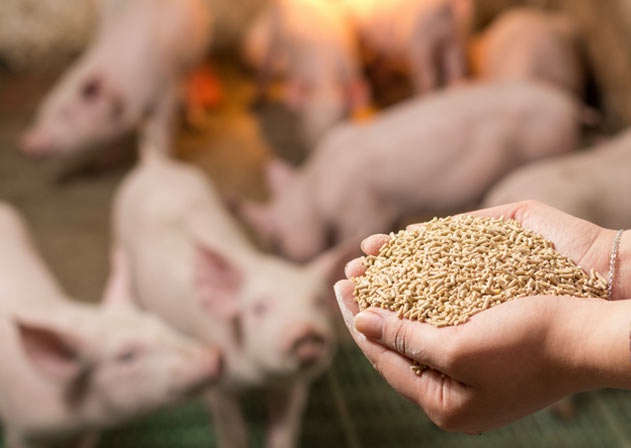Low ANF and improved FCR
There exists a multitude of factors influencing the health of pigs which include, but not limited to, management practices, environment, feed quality, and pathogen load.
Young piglets are sensitive to many external stimuli due to their immature biological functions and the modern day weaning age exacerbates problems associated with this transitional period. Consequently, enteric diseases in the nursery are common and are often expressed as low intake of feed, depressed growth, and diarrhea. The gut is the largest immune system; therefore, any damages to the gut hinders the ability to resist infections.
Read on to find out why anti-nutritional factors matter in piglet health and how our products can improve your feed conversion ratio.


LOW ANF
Even though soy is an excellent vegetable protein, soy also contains components which can hinder the digestibility in the gut of the young animal, such as antigenic protein, oligosaccharides, phytic acid, lectins and trypsin inhibitors. As a whole, we refer to these as anti-nutritional factors(ANFs).
Anti-nutritional factors cannot be digested and can potentially even be harmful for animals, e.g. by forming a substrate for bacterial fermentation in the gut. Unevenness of soy anti-nutritional factors therefore not only affects growth performance but also increases the risk of pathogenic bacteria.
Therefore ensuring the lowest possible anti-nutritional factors activity in soybean ingredients is key to improve the performance, health and welfare of animals. Our patented bio conversion process ensures that all our protein products have a reduced ANF content.

Improved FCR
High digestibility (SID) improves gut health and results in improved Feed Conversion Ratio.
When replacing e.g. an animal protein with protein products from Hamlet Protein, farmers experience reduced feed costs, as they simply use less feed when they add Hamlet Protein products to their diets.
As an extra benefit they also experience lower mortality and increased average daily gain, ensuring them more earnings per piglet and a better ROI.



